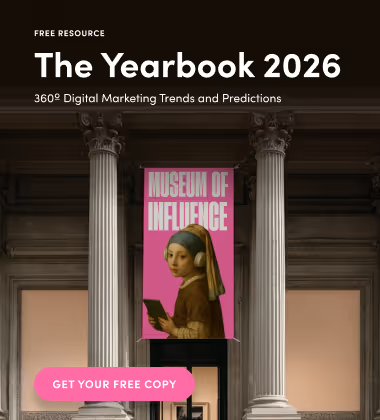AI tools can speed up your writing process, but they’re not perfect. From repetitive phrasing to off-brand tone, common AI mistakes can weaken your message if left unchecked. In this blog, we’ll show you how to write content that feels polished and professional, by spotting AI slip-ups early and fixing them with a human touch.
AI writing tools are everywhere, and for digital marketers, they've become as common as scheduling apps and analytics dashboards. From whipping up blog outlines to spitting out product descriptions, AI has proven it can save time.
Here's the twist: while these tools can be sharp, they're not flawless. Some of the most common AI errors can tank readability, muddle messaging, or even harm your brand credibility if left unchecked.
That's where the human touch comes in. By learning to identify AI slip-ups, you can:
- smooth the rough edges
- keep your brand voice intact,
- and deliver content that resonates with readers instead of sounding like it was drafted by a robot on autopilot.
If you're juggling multiple deadlines, there's always support out there. Many marketers lean on a legitimate essay writing service as a backup resource, making sure quality stays high while timelines stay sane. At the end of the day, strategy and execution both deserve attention. So let's dive into the mistakes AI makes most often and how you can fix them!
AI writing: A tool, not a replacement
AI tools are powerful, especially the ones that offer free AI writing options. They can quickly generate a baseline draft, brainstorm ideas, or create lists that cut your prep time in half. But here's the kicker: "free" doesn't always mean "ready."
Common pitfalls include:
- Overly generic text. Drafts often lack depth and unique insights.
- Repetition. AI tends to recycle phrases or overuse transitions.
- Tone mismatch. Copy can sound stiff.
Can you plagiarize yourself? Originality still matters
Here's a question floating around more and more: Can you plagiarize yourself? Surprisingly, yes. Reusing unedited content can trigger plagiarism detectors, a concern for marketers repurposing material.
AI complicates this further. Since it pulls from patterns in its training data, it sometimes spits out passages too close to existing text. For brands, this is risky; it could dilute your authority or create legal headaches.
Here's a quick comparison:
Freshness is your friend. Even when repurposing, add new insights, data, or creative framing. That way, your content works harder and avoids raising red flags.

Source: Unsplash
How to train AI to work with you
Even the smartest AI tool can stumble if the input is sloppy. That's why strong prompts are essential. Think of it like giving a contractor directions: vague requests yield vague results. Precise instructions deliver something closer to your vision.
Here are three quick ways to upgrade your AI prompts:
By learning how to write a prompt strategically, you're not just steering AI; you're protecting your content's value and credibility.
What AI doesn't know about context
AI is trained on vast amounts of data, but it doesn't live in the real world. It doesn't know that your client's audience prefers TikTok to Instagram, or that the latest platform update has already shifted algorithms. It also doesn't understand student-athletes trying to balance scholarships or entrepreneurs juggling side hustles while studying, for example.
This lack of context is why human oversight is non-negotiable. Your insights bring in the nuance AI misses, ensuring campaigns connect with reality, not just with patterns.
FAQs: Quick answers to common AI writing concerns
Key Takeaways
Bottom line, keep It human
AI is a powerful ally, but it's not the final draft. From avoiding self-plagiarism to crafting smarter prompts, the best results happen when human creativity and machine speed work together.
The next time AI serves up a clunky intro or a repetitive paragraph, don't get discouraged; get editing. Use tools, services, and your expertise to polish the output. When writing aligns with strategy, tone, and originality, your brand doesn't just show up in feeds, it leaves a lasting impression.
Remember, you're not just using AI. You're shaping it to amplify your own voice, and that's where the real influence begins!



